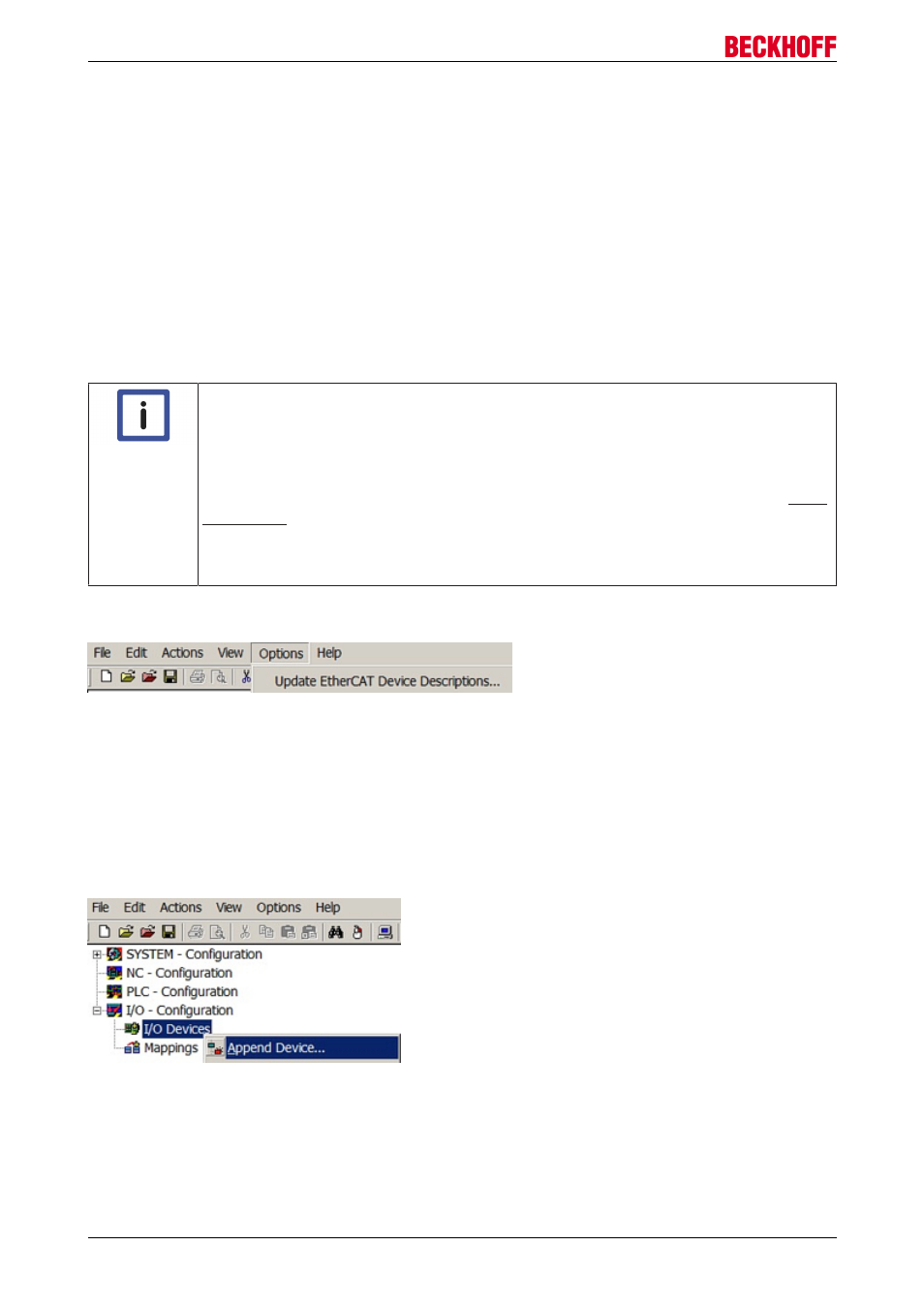BECKHOFF EL7037 User Manual
Page 66

Commissioning
5.1.3
Offline configuration creation (master: TwinCAT 2.x)
Distinction between Online and Offline
The distinction between online and offline refers to the presence of the actual I/O environment (drives,
terminals). If the configuration is to be prepared in advance of the system configuration as a programming
system, e.g. on a laptop, this is only possible in “Offline configuration” mode. In this case all components
have to be entered manually in the configuration, e.g. based on the electrical design.
If the designed control system is already connected to the EtherCAT system and all components are
energised and the infrastructure is ready for operation, the TwinCAT configuration can simply be generated
through “scanning” from the runtime system. This is referred to as online configuration.
In any case, during each startup the EtherCAT master checks whether the slaves it finds match the
configuration. This test can be parameterised in the extended slave settings.
Note
Installation of the latest ESI-XML device description
The TwinCAT EtherCAT master/System Manager needs the device description files for the
devices to be used in order to generate the configuration in online or offline mode. The de-
vice descriptions are contained in the so-called ESI files (EtherCAT Slave Information) in
XML format. These files can be requested from the respective manufacturer and are made
. The ESI files should be saved in the TwinCAT installation directory (default:
C:\TwinCAT\IO\EtherCAT ). The files are read (once) when a new System Manager win-
dow is opened.A TwinCAT installation includes the set of Beckhoff ESI files that was cur-
rent at the time when the TwinCAT build was created.
For TwinCAT 2.11 and higher, the ESI directory can be updated from the System Manager, if the
programming PC is connected to the Internet (Option -> “Update EtherCAT Device Descriptions”)
Fig. 56: Updating of the ESI directory
The following conditions must be met before a configuration can be set up:
• the EtherCAT device must be created/defined in the System Manager [
• the EtherCAT slaves must be defined [
Creating the EtherCAT device
Create an EtherCAT device in an empty System Manager window.
Fig. 57: Append EtherCAT device
Select type ‘EtherCAT’ for an EtherCAT I/O application with EtherCAT slaves. For the present publisher/
subscriber service in combination with an EL6601/EL6614 terminal select “EtherCAT Automation Protocol
via EL6601”.
EL70x7
66
Version 1.0